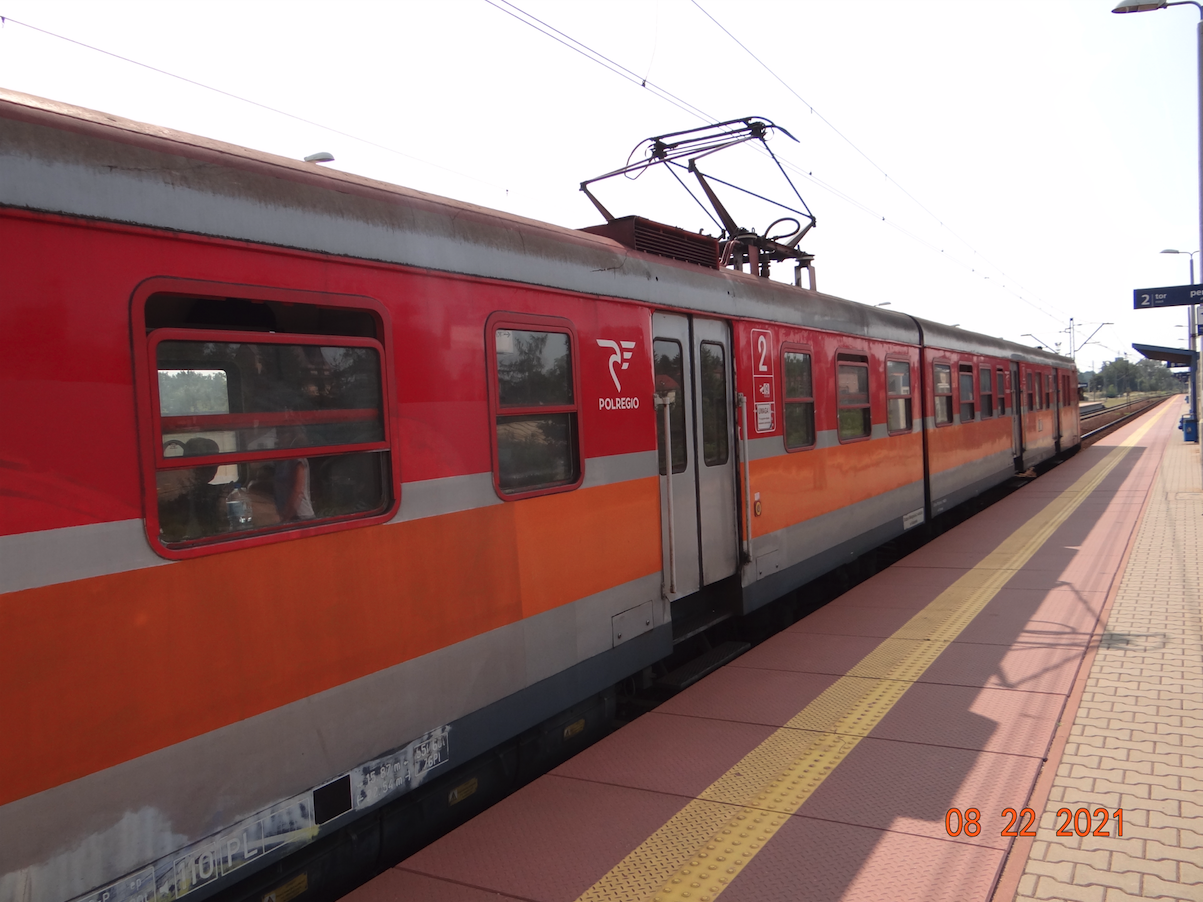Kraków 2025-05-20
EN57-2033
EN57-2033 were EN57-1271. Car numbers; EVN: 94 51 2 122 793-4 (PL-PREG ra), EVN: 94 51 2 122 794-2 (PL-PREG s), EVN: 94 51 2 122 795-9 (PL-PREG rb). The train was built in 1979 and has the factory number 805. Modernization took place in October 2006. The train was transferred to PKP Przewozy Regionalne (PolRegio) in Krakow. In 2025, the train was still in operation.
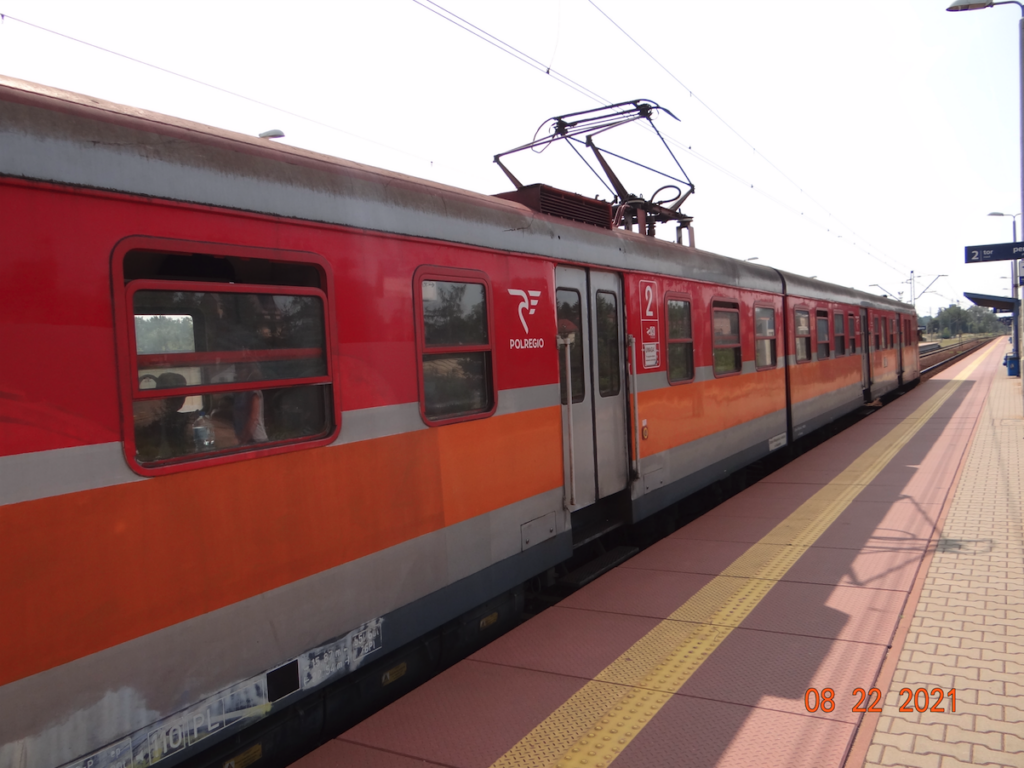
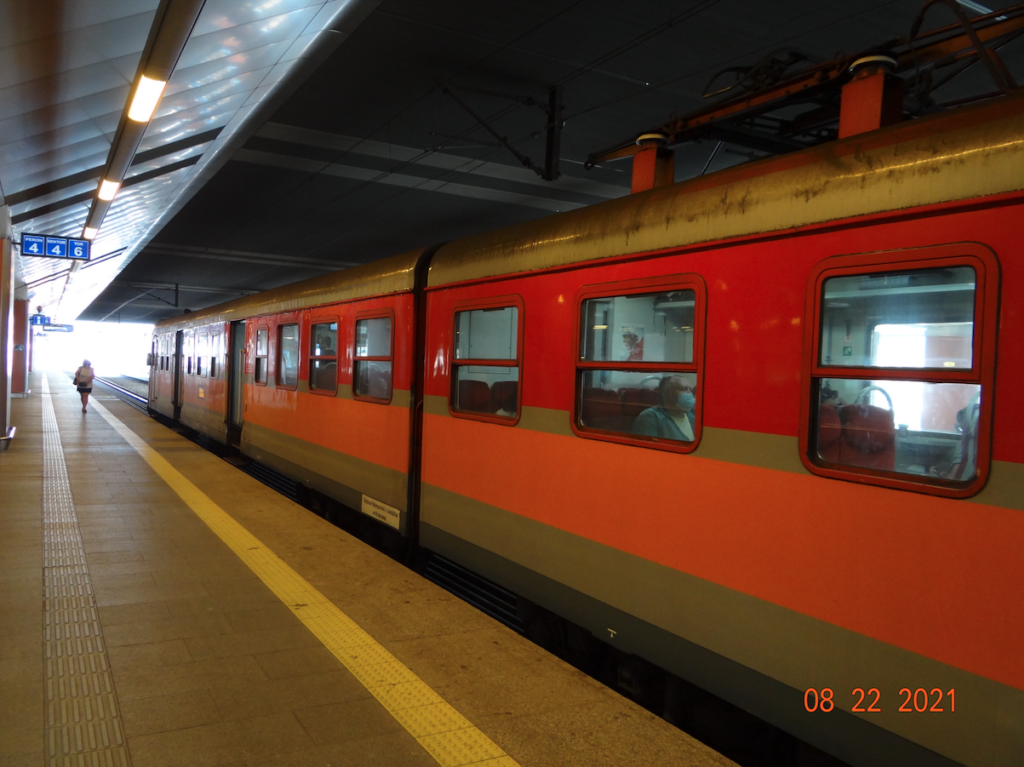
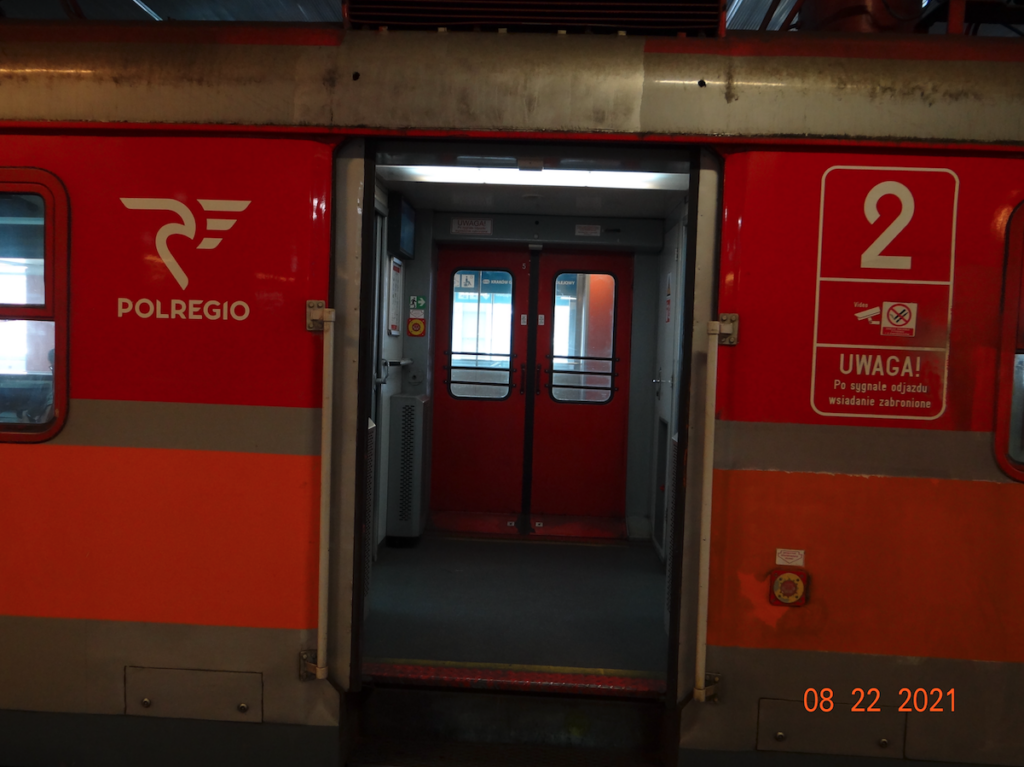
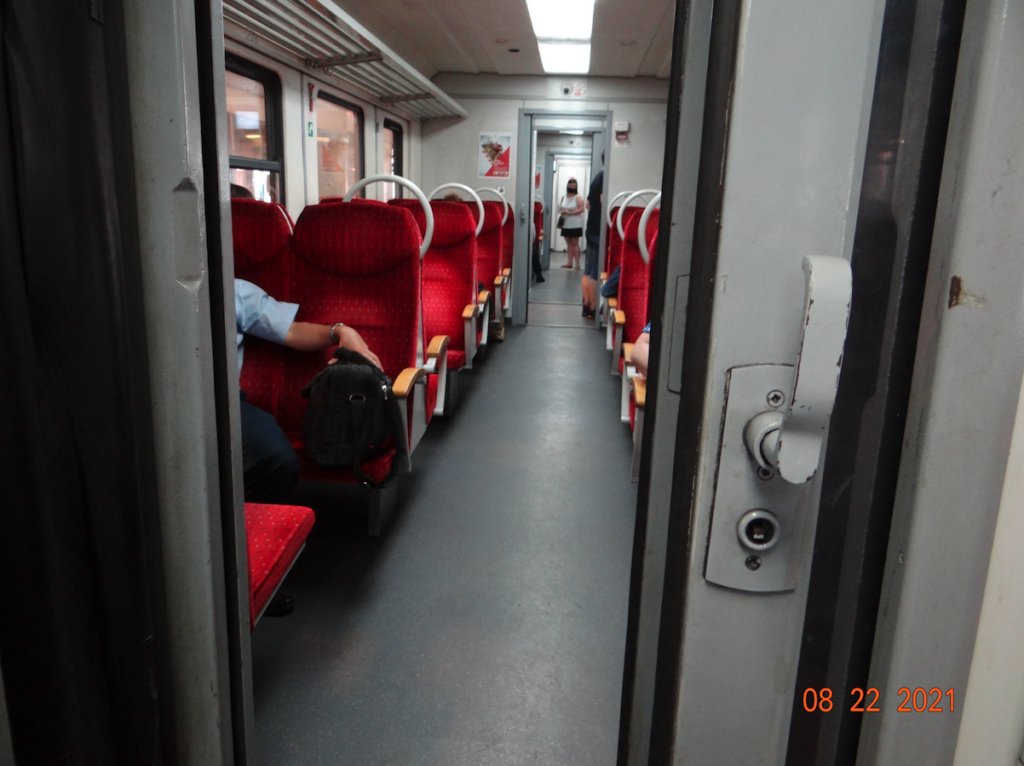
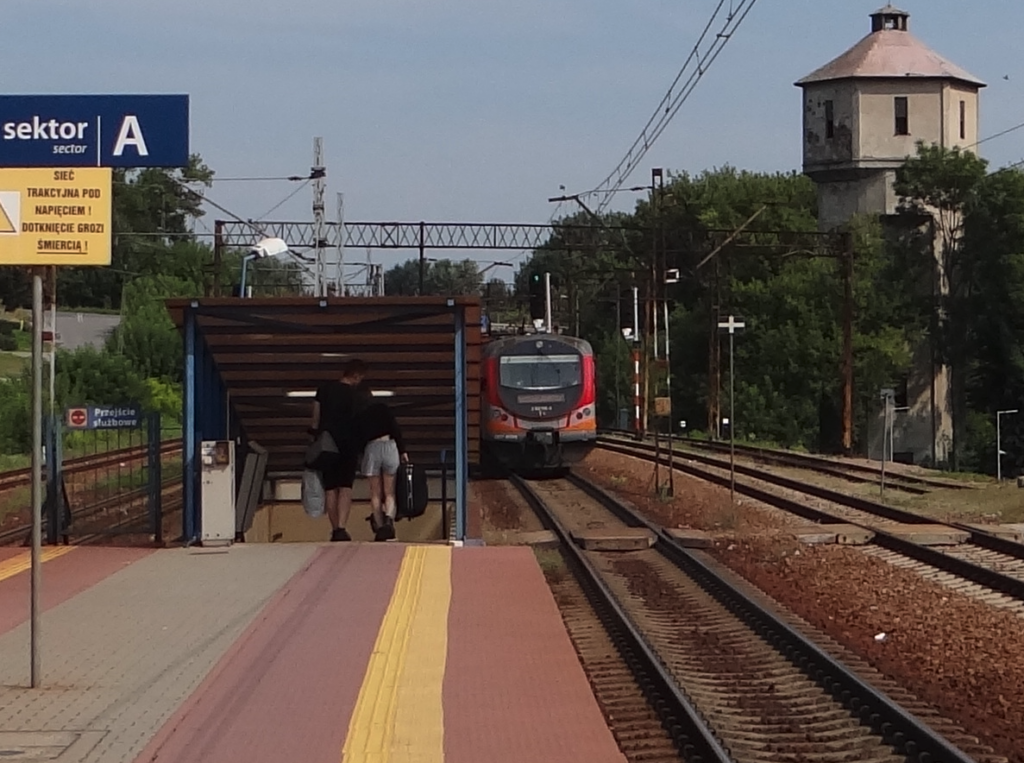
Electric Multiple Unit EN57.
Electric Multiple Unit EN57 is a legend of Polish tracks.
In 50 years, the electrification of the main railway junctions was already planned and implemented. Electric suburban passenger trains were already being considered at that time. Additionally, there was a problem that the main stations had high platforms (40-50 cm from the railhead). On the other hand, the secondary stations had low platforms, sometimes as high as the curb. Therefore, future passenger trains should serve all platforms.
Design work on the new passenger train was carried out in the period 1959-1961, in parallel with the EZT EW55 train for the Warsaw and Gdańsk junctions. Therefore, the EN57 and EW55 trains are very similar to each other. They differ in the number of pairs of doors in one car and the entrance steps. The documentation was prepared by the Central Design Office of the Railway Rolling Stock Industry Poznań (currently OBRPS Poznań). The prototype EN57 train made its first run in December 1961. Production was placed in Wrocław at the “Pafawag” factory. In the “Pafawag” factory, the engine cars were designated type 6B, and the control and shunting cars were designated type 5B.
The EN57 EZT train is a Polish design that was produced from January 1962 to July 1993, i.e. for 31 years. The EN57 train is the longest-produced rail vehicle in the world. In 2021, it was 60 years since the first train, an electric unit, was built. A total of 1,429 units were built. Other sources indicate 1,452 units, including exports to Yugoslavia and four-car trains.
Based on the EZT EN57 train, the “Pafawag” factory also built four-unit units with an additional engine unit, which were designated EZT EN71. The first such train was built in 1964. These trains were initially built to service the difficult Kraków-Zakopane route. In 1965, Yugoslavia bought trains of this type. Apparently, in Yugoslavia, the trains were called “Gomułka”, after Władysław Gomułka (first secretary of the Polish United Workers’ Party), during whose time the trains were sent to the Balkans.
Generally, it can be said that there were three production series of EN57:
Serial numbers 001 – 130 and 601 – 1 113, which received corrugated sides and three windows in the front wall. Corrugated sheets increase the rigidity of the structure, just like stringers in aircraft fuselage structures. Additionally, some trains had a first-class compartment.
Serial numbers 1,114 – 1,825 have smooth sides of the boxes and three windows in the front wall.
Serial numbers 1,900 – 1,953 have smooth sides of the cars and two windows in the front wall, similar to EW58. Additionally, the driver’s cabin equipment is different, because the installed systems are slightly different.
Serial numbers 2001 – 2075 were assigned to trains after modernization according to the SPOT program, i.e. Sectoral Operational Program Transport. The front wall of the train has been completely changed. The wall is tilted to reduce frontal air resistance. It is equipped with one window and a new set of lights. The lights vary depending on the company that performed the modernization. Passengers received individual upholstered seats. No air conditioning was installed.
Serial numbers 3001 – 3010 were assigned to trains that returned from the countries of the former Yugoslavia and were renovated and retrofitted.
Operation of EZT EN57 trains.
In the 80s, central door opening by the driver, and not by the train manager, began to be introduced in ETZ EN57 trains. Additionally, an audible warning signal was introduced when the doors were closing.
In 1993, during modernization, trains were also built that had a separate Class 1, in the Rb carriage. They had upholstered aircraft seats, curtains in the windows and a sound system. There was also a so-called bar compartment with a stove, sink and refrigerator.
The long years of operation of EZT EN57 trains meant that the owners subjected them to various modifications. As a standard, since 1989, the trains were repainted. The traditional yellow and blue paint was characteristic of the PRL period. That is why the trains were called “yellows”. New carriers paint the trains in their own colors. Currently (2021) the most famous livery in Poland is the livery of the PolRegio carrier.
For 90 years, modernization has consisted, among other things, of adapting vehicles for disabled people. The IT system was modified and the sound system was introduced. The heating was improved. Air conditioning was installed in the driver’s cabins and in the passenger compartments. The windows were replaced with double-glazed ones. Compartments for transporting bicycles were introduced.
A major change was the replacement of traction motors with asynchronous motors, which are controlled by an inverter. These motors are more powerful, because each motor has a power of 250 kW. A train with such motors reaches a speed of up to 125 km/h, compared to 90 km/h with the previous engines, with a power of 125 kW.
Interestingly, many components from scrapped trains are used in new rolling stock. This is not the case with, for example, drive bogies. The frames and skeletons of the boxes are also used. Sometimes, trains built on such a basis still have the EN57 designation, but very high serial numbers. Others, on the other hand, receive a completely new designation, and their appearance does not betray their origin from EN57. This was the case with the Newag 14WE trains, of which 9 were built, in the period 2005 – 2009.
As part of the SPOT program (Sectoral Operational Program Transport) in the period 2006-2007, 75 EZT EN57 trains were modernized and assigned serial numbers 2001-2075.
An anti-theft system with motion detectors, 16 cameras, the preview of which is visible on the screen in the driver’s cabin, and which continuously monitor the interior of the vehicle and have a record on memory cards, were installed in the modernized trains.
In 2007, for SKM Trójmiasto and Koleje Mazowieckie, several trains were modernized to the EN57 KM version, where the electrical systems were significantly improved, including changing the resistance start to impulse start.
In 2008, Koleje Mazowieckie ordered the modernization of 10 trains to the EN57 AKM version. The trains were fitted with LK450X6 AC (asynchronous) engines, developed by the EMIT company from Żychlin. The new engine has a power of 250 kW, and the entire train has a power of 1 MW, which significantly improved the traction parameters of the vehicles. Acceleration increased, and the maximum speed was raised to 125 km/h.
Other local governments, such as the Łódź and Wielkopolska provinces, also decided to modernise their EZT EN57 trains. The modernisation was carried out individually for each entity. Therefore, the trains received very different additional letter markings. Mainly, the engines were replaced with asynchronous ones. New passenger seats and wall coverings were installed. Closed system toilets and toilets for the disabled were installed. Driver’s cabins were replaced, new train fronts and air conditioning were installed. External doors were replaced with step-sliding ones, which are more sealed. Ticket machines and vending machines for drinks and sweets were installed.
In September 2017, the PolRegio carrier received the first deeply modernized EN57-2205 train. The train is no longer similar to the classic EN57, although it has the designation EN57ALc. A total of 36 units were rebuilt. These trains have already undergone the second level P5 renovation. The renovation was carried out at the ZNTK plant in Mińsk Mazowiecki, which belongs to the PESA group. The modernized trains have a single-space interior along their entire length and are equipped with air conditioning. The seats are aircraft-style, well-upholstered and very comfortable. There is also Wi-Fi for passengers and 230 V sockets. Each train has two closed-system toilets, one of which is designed for disabled people and has a baby changing table. The toilets also have electric hand dryers.
In 2017, the EN57-001 train stationed in Przeworsk was placed under the protection of the conservator of monuments and will not be scrapped. It is an important exhibit in the history of the Polish Railways.
The problem with the unpleasant smell was that the air intake for the compressors was placed in the toilet. Drunk men would pee on the grates in the wall instead of in the toilet. At first, the grates were moved to the outside of the wagon body. But then the grate would draw in rain. Eventually, the intakes were placed under the wagon body and the problem was gone.
Construction of the EN57 EZT train.
The EN57 train consists of three cars. The front cars are control cars and equipped with driver’s cabins. They are marked “ra” and “rb” (shunting car). These cars have two rolling bogies. The middle car is a driving car and is marked “s”. It has two driving bogies (four motors) and two pantographs (current collectors). Initially with a single slide, and later with a double one. The pantograph is of the scissor type. Each car has two pairs of passenger doors. The rolling wheels have a diameter of 0.94 m. The driving wheels have a diameter of 1.00 m.
The cars are connected to each other by a so-called “factory” short coupler, which is only detachable in workshop conditions. Automatic Scharfenberg couplers are installed at the fronts of the train, which allow driving in multiple traction.
The car frame and bodies are made of steel profiles connected by welding. The car floor is at a height of 1.153 m from the rail head. The car entrance has two steps.
For various reasons, you can find EZT EN57 trains consisting of different cars.
Interior of EZT EN57 cars.
In the 60s/70s, the cars had soft seats upholstered with leather (green, brown or blue) and were of medium thickness. Unfortunately, due to vandalism, new or renovated trains received hard plastic (composite) seats in red.
The walls and ceilings in the cars are lined with a wood-like laminate (light pine). Electric lamps are installed in the ceilings. The windows are divided into halves, and the upper part is lowered down. The windows have single panes. The panes of all windows are made of tempered glass. Aluminum shelves for luggage are placed above the windows. The floor is made of wood covered with plastic. The external doors of the car are automatic, moved by compressed air, are 1.30 m wide, lead to a corridor, where there are internal doors closed manually and lead to spacious compartments, in which there are up to 32 seats or, as standard, up to 24 seats. Passengers move in the middle of the compartments. Between the carriages there are passages for passengers and the conductor’s team with manually closed doors. There are open toilets in the train, which can only be used while the train is moving. In the toilet there is a toilet (bowl) and a washbasin. Usually only with cold water. The radiators are electric and placed under the passenger seats. In the other rooms, the radiators are placed vertically against the walls and covered with sheet metal with holes. In the control carriages there are compartments for passengers with larger luggage or with bicycles and skis.
In the control carriage there are separate doors only for the train crew. In the driver’s cabin, the right position was occupied by the driver (mechanic), and the left by the train manager, who operated the automatic doors centrally.
Written by Karol Placha Hetman
